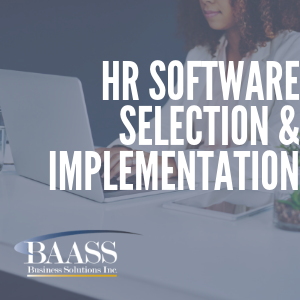What is HRIS?
It stands for Human Resources Information System, and is a tool that aids the HR department with efficiency and integrations. Employees today want to be connected with all their important information and HRIS helps every business successfully accomplish this to meet the demands of the twenty-first century.
Take a moment and answer these questions:
- Do my employees want a system where their relevant HR information is easily accessible and viewable from their smartphones?
- Is my HR department plagued by paperwork and error prone data entry?
- Should my recruiting process be revamped to account for new technology?
- Does my organization have high turnover rates?
- Do I find that more and more employees are concerned with maintaining a good work/life balance?
If you answered Yes to any of those, than implementing a HRIS can be the solution. Now, you many be wondering how to implement a tool like this. The following checklist can help serve as a guide assisting with the many variables you may encounter during your HRIS implementation project.
Our HRIS Implementation Checklist
-
Choose the Right People
Planning an HRIS implementation requires people to fill several roles. A project manager is the obvious one, but you’ll also need someone to work on the project scope, an implementation team, management sponsorship or an executive champion, and a steering committee, or a core committee that meets more frequently than the entire implementation team. Before researching HRIS vendors, consider people in your organization who can fill these roles and discuss it with them. -
Build a Business Case for the Project
Build the business case for the HRIS project by aligning core organizational goals to the case for the HRIS. Tie it into ROI if you can to strengthen the case for an HRIS. -
Seek an Executive Champion
A champion or management sponsor is someone at the senior level in your organization who agrees that the need for an HRIS is there. He or she can pitch the project to other senior leaders, secure funding, and resources, and provide valuable direction.Consider hiring a consultant to lead the project: Few companies have the luxury of hiring a special project manager. Instead, seek a vendor who can provide project management skills so that you don’t have to find someone who can take on another task. -
Immediate Conversion or Parallel Conversion
Immediate conversion is the equivalent of flipping a switch and moving every aspect of HR management into the HRIS at once. Parallel conversion means having two systems running together for a while as you transition into the HRIS. The two systems may be manual systems and the new HRIS or a legacy system and the new HRIS. Immediate conversion forces people to use the new system, but parallel may be better if you want a phased rollout. -
Set Up Training Early and Host Often
To facilitate the change to a new system, train your teams early and often on how to use the new system. Although it may seem harsh, making the new system mandatory may be necessary to help laggards transition to it. -
Pulse Check on Corporate Culture
Corporate culture can enhance HRIS adoption or derail it. Talk to your implementation vendor or consultant about how to overcome common areas of corporate culture that can hinder the implementation. For example, do you need to have several executive sponsors so that it’s clear that the company’s leaders expect everyone to use the new system?
Does your company have a habit of rolling out new software only to abandon it for the next latest and greatest product a few months later? Each of these situations requires a different approach. A skillful, experienced software consultant knows the challenges and has solutions to navigate difficult terrain.
Implementing an HRIS system presents its own unique set of challenges. Download this checklist, to help you avoid many of the potential challenges and enjoy a smooth transition to your new system.
Planning HRIS Implementation: A Checklist
BAASS Business Solutions
At BAASS Business Solutions, we seek to help our customers improve processes to become more profitable. We take the time to understand the needs of your business and help you select software that will improve efficiencies, service, and profitability. HRIS Systems are just one of the many software resources we offer. For more information, visit BAASS or contact us.


